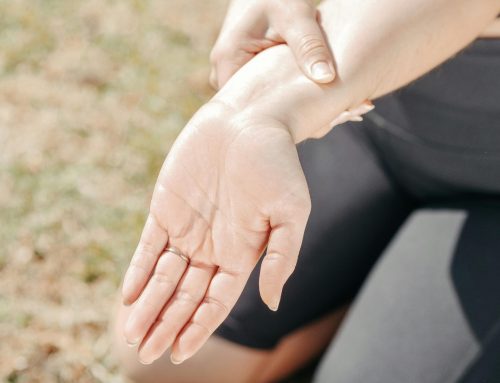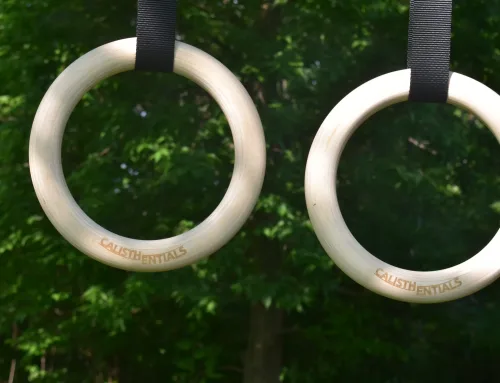If you’ve been doing calisthenics for a while, you might start asking yourself, “Am I still a beginner, or can I call myself an intermediate athlete?” It’s a common question, especially once basic exercises like push-ups and pull-ups start to feel easier. The jump from beginner to intermediate isn’t always obvious, but there are clear signs that show you’re progressing. These can be the movements you train, the weighted exercises you can perform, or the skills you’ve unlocked.
Being intermediate doesn’t mean you’re doing advanced skills like full planches or even handstand push-ups yet. It means you’ve built a solid base of strength, you understand how to control your body, and you’ve started working on more challenging skills like L-sits, front and back lever, and even the muscle-up. You also train with a bit more structure and often working towards a goal skill or exercise. At this stage in your calisthenics journey, you’re not just doing random workouts anymore. You likely follow a routine, track your progress, and know how to push yourself without burning out.
In this article, we’ll go over the signs that show you’ve reached the intermediate level in calisthenics. We’ll break down the skills you should be working on, what kind of strength you should have, and how your mindset and training habits change as you move forward. If you’re not sure where you stand, this guide will help you figure it out.
What Separates a Beginner and Intermediate Calisthenics Athlete?
The biggest differences between a beginner and an intermediate calisthenics athlete comes down to their body control, nervous system adaptations, and specific strnegth. Beginners are still building a foundation through basic movements like push-ups, pull-ups, squats, and planks, and focusing on form, mobility, and coordination. At this stage, workouts often revolve around improving general strength. These are often referred to as “the basics.”
An intermediate calisthenics athlete, on the other hand, has already built that base. They can perform basic exercises with good technique and higher reps, and they’re starting to work on more challenging variations and skills, like levers, early planche progressions, muscle-ups ups or handstands. They also train with more structure. Often following routines or training programs, tracking progress, and starting to apply specific training methods like EMOM and Grease The Groove. While beginners are learning how to move, intermediates are learning how to improve.
Milestones For Intermediate Calisthenics Athletes
To be considered at the intermediate level in calisthenics, you should have solid control over the core bodyweight movements. This doesn’t mean youneed to be doing flashy skills yet, but they can definitely help gauge your progress. Here’s a list of basic exercises you should be able to do to consider yourself an intermediate athlete. Due to differences in physiology, body types, fat distribution, and genetics here are some rough milestones for identifying intermediate strength for males.
Bodyweight Basics
These are the basic bodyweight exercises an intermediate athlete should be able to do.
| Exercise | Reps |
| Push Ups | 30+ |
| Dips | 25+ |
| Pull Ups | 12+ |
| Chin Ups | 15+ |
| Squats | 15+ |
Unlocked Calisthenics Skills
These are the primary skills that once unlocked, are a big milestone for intermediate calisthenics athletes. However, there is a large difference in difficutly between each of these skills and they are often unlocked in different orders for many people.
| Exercise |
Time (sec.) / Reps
|
| L-Sit | 25+ |
| Back Lever | 8+ |
| Front Lever | 2+ |
| Muscle Up | 1 |
| Straddle Planche | 3+ |
| Handstand | 20+ |
Other Skills Unlocked At The Intermediate Level
These are the more difficult skills unlocked during the later end of an intermediate calisthenics athlete’s journey. Unlocking these signals they are getting very close to the advanced category.
| Exercise | Time (sec.) / Reps |
| Front Lever Pull Up | 1+ |
| Handstand Pushup | 3+ |
| Straddle Planche Press | 1+ |
| Pistol Squat | 3+ |
| Iron Cross | 4+ |
Weighted Basics 1 Rep Max
Here are the minimum percent added bodyweight 1 rep max basic exercises. The weight is often added using a dip belt, weighted vest, or backpack.
| Exercise | % Added Bodyweight |
| Push Ups | 50% |
| Dips | 60% |
| Pull Ups | 60% |
| Chin Ups | 70% |
| Squats | 50% |
However, not every athlete has the same goals. Some focus on push while others focus on pull. Some focus skills, while others focus on weighted basics. Everyone has different goals when it comes to calisthenics training. In general, if you can perform at least 13 out of the 21 milestones we mentioned, in our opinion, you qualify as an intermediate athlete.
Training Differences Between Beginner and Intermediate Athletes
While beginners are focused on learning the basics, building a foundation and starting to understand body awareness in some skills, intermediates start to focus on 1 or 2 specific goals. The 3 most common are the planche, handstand, and front lever. Intermediate athletes will structure their training around learning these skills. They will build or follow a routine that they believe will get them to their goal.
This is when assistance bands become a great way to progress certain skills and learn movement patterns.
Beginner calisthenics athletes and even hypertrophy-based bodybuilders will often follow a split like PPL (Push Pull Legs). This will build general strength and muscle size however often won’t help with specific strength needed to unlock more complex skills.
Even if an athletes has the strength in each muscle to perform a skill, they may lack the ability to activate all the right muscles simultaneously to hold or perform that skill. This is where specificity will lead to progress.
What Level Are You At?
Reaching the intermediate level in calisthenics is an exciting milestone that shows you’ve built solid strength, control, and skill with your bodyweight training. It’s a stage where your workouts become more focused, challenging, and rewarding as you start mastering new moves and refining your technique. Understanding the difference between beginner and intermediate training can help you set realistic goals and stay motivated on your journey. To learn more about calisthenics training check out our blog. If you are closer to the intermediate level and want to make basics harder, we recommend getting a pair of gymnastics rings.




